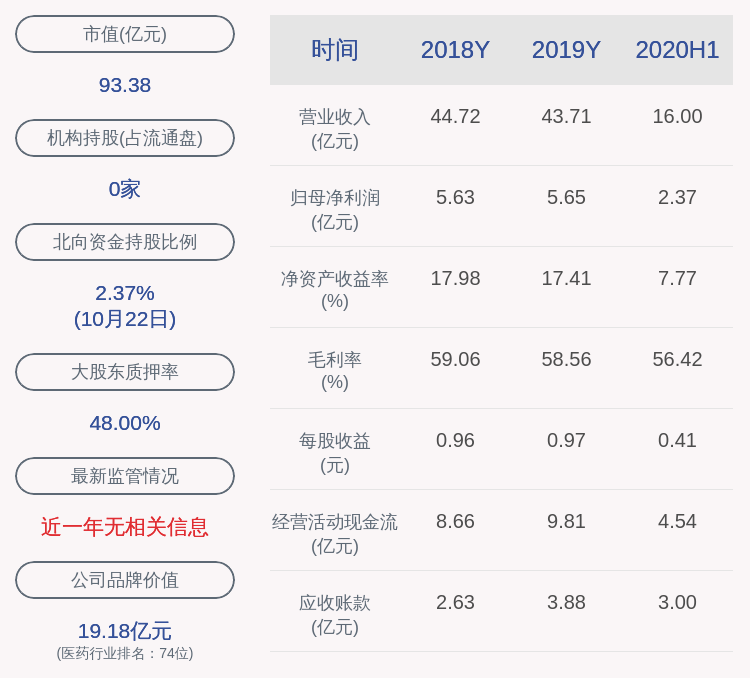
ж–Үз« жҸ’еӣҫ
иҝҷжҳҜж—©жңҹзҡ„дёҖзҜҮж–Үз« пјҢеҲҶдә«зҡ„еҶ…е®№жҲ‘еҲ°зҺ°еңЁиҝҳжҳҜи§үеҫ—йқһеёёжңүж„ҸжҖқ гҖӮжөҸи§ҲеҷЁдёҚжҳҜз”ЁжқҘжөҸи§ҲзҪ‘йЎөгҖҒи§ӮзңӢзҪ‘з»ңи§Ҷйў‘зҡ„еҗ—пјҹйҡҫйҒ“иҝҳеҸҜд»ҘеңЁжөҸи§ҲеҷЁйҮҢз Ғд»Јз Ғеҗ—пјҹ
EarlGrey@зј–зЁӢжҙҫ
жІЎй”ҷпјҒзңҹзҡ„еҸҜд»Ҙ гҖӮ
зҺ°еңЁе·Із»ҸжңүеҫҲеӨҡзұ»дјјJSFiddleгҖҒJSBinиҝҷж ·еңЁзәҝзј–иҫ‘д»Јз Ғзҡ„зҪ‘з«ҷпјҢдёҚиҝҮжҲ‘们д»ҠеӨ©иҰҒеҲҶдә«зҡ„方法并дёҚйңҖиҰҒжіЁеҶҢ第дёүж–№зҪ‘з«ҷпјҢеҸӘйңҖиҰҒеңЁжөҸи§ҲеҷЁзҡ„ең°еқҖж Ҹиҫ“е…ҘдёҖиЎҢд»Јз ҒеҚіеҸҜ гҖӮ
жҲ‘们йҰ–е…ҲжқҘзңӢдёҖдёӢе…·дҪ“зҡ„ж•Ҳжһң гҖӮ

ж–Үз« жҸ’еӣҫ
дёҠйқўиҝҷе№…еӣҫдёӯпјҢжҲ‘们еҸ‘зҺ°еңЁжөҸи§ҲеҷЁдёӯеҸҜд»Ҙиҫ“е…ҘPythonд»Јз ҒпјҢиҖҢдё”ж”ҜжҢҒиҜӯжі•й«ҳдә®е’ҢиҮӘеҠЁзј©иҝӣеҠҹиғҪ гҖӮйӮЈд№ҲпјҢиҝҷ究з«ҹжҳҜжҖҺд№Ҳе®һзҺ°зҡ„е‘ўпјҹ
иҝҷе…¶е®һеҸҜд»ҘиҝҪжәҜеҲ°2012е№ҙж—¶пјҢдёҖдҪҚеҸ«Jose Aguinagaзҡ„еӣҪеӨ–ејҖеҸ‘иҖ…еңЁCoderwallдёҠеҲҶдә«зҡ„дёҖдёӘе°ҸиҙҙеЈ« гҖӮ
е°ҶжөҸи§ҲеҷЁеҸҳжҲҗдёҖдёӘз®Җжҳ“ж–Үжң¬зј–иҫ‘еҷЁдёҖејҖе§Ӣзҡ„еҠҹиғҪйқһеёёз®ҖеҚ•пјҢж №жң¬жІЎжңүиҜӯжі•й«ҳдә®пјҢд№ҹжІЎжңүиҮӘеҠЁзј©иҝӣпјҢд»…д»…жҳҜе°ҶжөҸи§ҲеҷЁеҸҳжҲҗдёҖдёӘж–Үжң¬зј–иҫ‘еҷЁиҖҢе·І гҖӮ
д»Јз ҒеҰӮдёӢпјҡ
-
data:text/html, <html contenteditable>
гҖҗжөҸи§ҲеҷЁ 1 з§’еҸҳиә« Python зј–иҫ‘еҷЁгҖ‘иғҢеҗҺзҡ„еҺҹзҗҶ并дёҚй«ҳж·ұпјҢеҸӘжҳҜз”ЁеҲ°дәҶData URIж јејҸиҖҢе·І гҖӮиҝҷиЎҢд»Јз Ғе‘ҠиҜүжөҸи§ҲеҷЁжёІжҹ“дёҖдёӘHTMLйЎөйқўпјҢиҖҢиҝҷдёӘйЎөйқўе…·еӨҮдёҖдёӘH5еұһжҖ§пјҡcontenteditable гҖӮ
Data URIжҳҜз”ұRFC 2397е®ҡд№үзҡ„дёҖз§ҚжҠҠе°Ҹж–Ү件зӣҙжҺҘеөҢе…Ҙж–ҮжЎЈзҡ„ж–№жЎҲ гҖӮж јејҸеҰӮдёӢпјҡdata:[иҜ·жғіе°қиҜ•зҡ„жңӢеҸӢжіЁж„ҸпјҢиҝҷиЎҢд»Јз ҒеҸӘйҖӮз”ЁдәҺChromeзӯүзҺ°д»ЈжөҸи§ҲеҷЁ гҖӮеҰӮжһңдҪ иҝҳеңЁдҪҝз”ЁIE8зӯүиҝҮж—¶жөҸи§ҲеҷЁзҡ„иҜқпјҢжҳҜжІЎжңүж•Ҳжһңзҡ„ гҖӮ
еҗ„з§Қж ·ејҸиЎҚз”ҹиҖҢеҮәз”ұдәҺдёҠйқўиҝҷдёӘе°ҸжҠҖе·§зҡ„еҮәзҺ°пјҢжҝҖеҸ‘дәҶи®ёеӨҡејҖеҸ‘иҖ…зҡ„зҡ„жҝҖжғ…пјҢдёҚж–ӯеҲҶдә«иҮӘе·ұзҡ„зүҲжң¬ гҖӮ
иҮӘеҠЁеҲҮжҚўиғҢжҷҜйўңиүІдёӢйқўиҝҷж®өд»Јз ҒпјҢеҸҜд»Ҙи®©зј–иҫ‘еҷЁеңЁдҪ дёҖиҫ№жү“еӯ—ж—¶пјҢдёҖйҒҚеҲҮжҚўиғҢжҷҜйўңиүІпјҡ
-
data:text/html, <html><head><link href=https://www.isolves.com/it/cxkf/yy/Python/2019-08-13/'http://fonts.googleapis.com/css?family=Open+Sans' rel='stylesheet' type='text/css'><style type="text/css"> html { font-family: "Open Sans" } * { -webkit-transition: all linear 1s; }</style><script>window.onload=function{var e=false;var t=0;setInterval(function{if(!e){t=Math.round(Math.max(0,t-Math.max(t/3,1)))}var n=(255-t*2).toString(16);document.body.style.backgroundColor="#ff"+n+""+n},1e3);var n=;document.onkeydown=function{t=Math.min(128,t+2);e=true;clearTimeout(n);n=setTimeout(function{e=false},1500)}}</script></head><body contenteditable style="font-size:2rem;line-height:1.4;max-width:60rem;margin:0 auto;padding:4rem;">
笔记жң¬ж ·ејҸдёӢйқўиҝҷж®өд»Јз ҒеҸҜд»Ҙе°ҶжөҸи§ҲеҷЁйЎөйқўеҸҳжҲҗдёҖдёӘ笔记жң¬зҡ„ж ·ејҸпјҢзңӢдёҠеҺ»еҫҲжңүж„ҹи§үпјҡ
-
data:text/html;charset=utf-8, <title>TextEditor</title> <link rel="shortcut icon" href=https://www.isolves.com/it/cxkf/yy/Python/2019-08-13/"http://g.etfv.co/https://docs.google.com"/> <style> html{height: 100%;} body{background: -webkit-linear-gradient(#f0f0f0, #fff); padding: 3%; height: 94%;} .paper { font: normal 12px/1.5 "Lucida Grande", arial, sans-serif; width: 50%; height: 80%; margin: 0 auto; padding: 6px 5px 4px 42px; position: relative; color: #444; line-height: 20px; border: 1px solid #d2d2d2; background: #fff; background: -webkit-gradient(linear, 0 0, 0 100%, from(#d9eaf3), color-stop(4%, #fff)) 0 4px; background: -webkit-linear-gradient(top, #d9eaf3 0%, #fff 8%) 0 4px; background: -moz-linear-gradient(top, #d9eaf3 0%, #fff 8%) 0 4px; background: -ms-linear-gradient(top, #d9eaf3 0%, #fff 8%) 0 4px; background: -o-linear-gradient(top, #d9eaf3 0%, #fff 8%) 0 4px; background: linear-gradient(top, #d9eaf3 0%, #fff 8%) 0 4px; -webkit-background-size: 100% 20px; -moz-background-size: 100% 20px; -ms-background-size: 100% 20px; -o-background-size: 100% 20px; background-size: 100% 20px; -webkit-border-radius: 3px; -moz-border-radius: 3px; border-radius: 3px; -webkit-box-shadow: 0 1px 2px rgba(0,0,0,0.07); -moz-box-shadow: 0 1px 2px rgba(0,0,0,0.07); box-shadow: 0 1px 2px rgba(0,0,0,0.07); } .paper::before { content: ''; position: absolute; width: 4px; top: 0; left: 30px; bottom: 0; border: 1px solid; border-color: transparent #efe4e4; } textarea{display: block; width:94%;margin:0 auto;padding:3.8% 3%; border: none; outline: none; height: 94%; background: transparent; line-height: 20px;} </style> <body spellcheck="false"> <div class="paper"> <textarea autofocus="autofocus"></textarea> </div> </body> </html>
жҺЁиҚҗйҳ…иҜ»
- з§ҳзұҚ收еҘҪпјҒgetиҝҷдәӣжҠҖиғҪпјҢеҸҳиә«иҒҢеңәе°Ҹиҫҫдәә
- еӨ§зұіиўӢйҡҫжӢҶејҖпјҹи®°дҪҸиҝҷ3дёӘе°ҸзӘҚй—ЁпјҢ3з§’е°ұиғҪжӢҶејҖпјҢеӨӘе®һз”ЁдәҶ
- IphoneдёҺwindowsеҰӮдҪ•е®һзҺ°ж–Ү件1з§’дә’дј пјҹ
- ж·ҳе®қи§Ҷйў‘ж—¶й•ҝеӨҡе°‘ ж·ҳе®қи§Ҷйў‘дёҖиҲ¬иҰҒеӨҡе°‘з§’еҗҲйҖӮ
- жө…жһҗжөҸи§ҲеҷЁзј“еӯҳ
- ж·ҳе®қз§’жҠўжҳҜдёҚжҳҜжҸҗдәӨи®ўеҚ•е°ұз®— ж·ҳе®қжҸҗдәӨи®ўеҚ•з®—дёҚз®—жҠўеҲ°дәҶ
- жөҸи§ҲеҷЁе…је®№жҖ§жөӢиҜ•иҰҒжөӢиҜ•е“ӘдәӣжөҸи§ҲеҷЁпјҹ
- еҫ®дҝЎиҒҠеӨ©иҮӘеёҰе°Ҹе°ҫе·ҙпјҢдёүз§’еӯҰдјҡ
- з§’жқҖзі»з»ҹжҖҺд№Ҳи®ҫи®Ўпјҹ
- Chrome жҺ§еҲ¶еҸ°е®һз”ЁжҢҮеҚ—

















